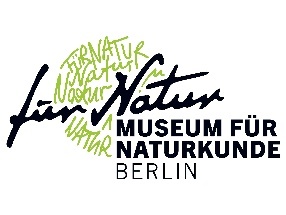Data Centers as defined in the NFDI4Biodiversity consortium are departments of science informatics and data infrastructure at recognized science institutions devoted to manage, store, archive and publish various types of bio- and geodiversity data. The core group of ten GFBio data centers has agreed on a number of consensus documents, tools, data pipelines and standards and technical formats for interoperability as published in the GFBio Wiki. Each of the data centers has its own profile (see below) and provides a portfolio of services which is in accordance with the core tasks of the respective organisation. Data are available via various facets of the GFBio search portal and as far as appropriate via the VAT tool/ GeoEngine.
Data Centers specialized on Plant, Nucleotide and Environmental Data
e!DAL-PGP – Plant Genomics and Phenomics Research Data Repository
ENA – European Nucleotide Archive
Learn more about the data center e!DAL-PGP
Learn more about the data center ENA
PANGAEA – Data Publisher for Earth & Environmental Science
Learn more about the data center PANGAEA
Data Centers at Natural Science Collections
BGBM – Botanic Garden and Botanical Museum Berlin, Freie Universität Berlin
DSMZ – German Collection of Microorganisms
Learn more about the data center BGBM
Learn more about the data center DSMZ
LIB – Leibniz Institute for the Analysis of Biodiversity Change
MfN – Leibniz Institute for Research on Evolution and Biodiversity, Berlin
Learn more about the data center BGBM
Learn more about the data center BGBM
SGN – Senckenberg Gesellschaft für Naturforschung
SGN has various interests in different data domains, including: Collection data, molecular data, observational data, environmental data, series of measurements and trait data. Data archiving for research projects is focusing on botanical, zoological and anthropological data, especially collection data in combination with the deposit of
- physical objects
- referenced multimedia objects.
SNSB – Staatliche Naturwissenschaftliche Sammlungen Bayerns
The Staatliche Naturwissenschaftliche Sammlungen Bayerns (SNSB) is a natural history collection facility in Bavaria. The SNSB IT Center as part of the SNSB is its institutional repository primarily for scientific bio- and geodiversity data of the natural history collections belonging to the SNSB.
The mission comprizes research activities in the field of biodiversity informatics and data science. Software is mainly designed and set up following the concepts of the Diversity Workbench (DWB). DWB software tools are registered in bio.tools, a service of ELIXIR Europe.
The SNSB IT Center as GFBio Data Center supports scientists and institutions by offering DWB support and workshops. Additional services are provided on a case-by-case basis. They might include the sustainable DWB management of data from its generation up to persistent storage, archiving and publication of approved, quality-controlled, standardized and well-structured, i.e. FAIR
- occurrence and provenance data (from specimens, biological samples and observations)
- taxonomic and checklist data
- trait data (e.g., morphological, anatomical, chemical and molecular descriptions)
SMNS – State Museum of Natural History Stuttgart
Research at the SMNS is based on our scientific collections of fossils, plants, insects, molluscs and vertebrates. Taxonomic research, through which organisms are identified, described, named and classified, is a central element of our daily work. The SMNS has a strong interest in collection and observational data as well as in genomic research data.
Data archiving for research projects focusing on botanical, zoological and paleontological data:
- Collection data, together with the deposit of physical objects, referenced multimedia objects.
- Observation and occurrence data, species monitoring projects, referenced multimedia objects.
- Taxon reference list data and checklist data.







